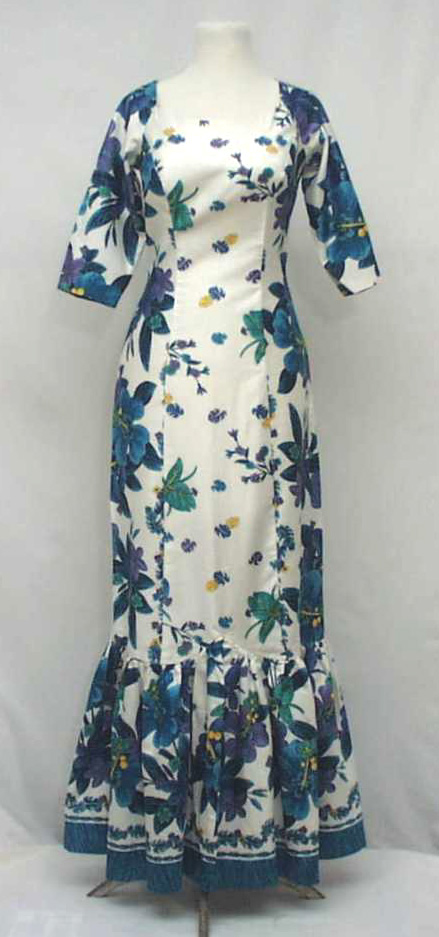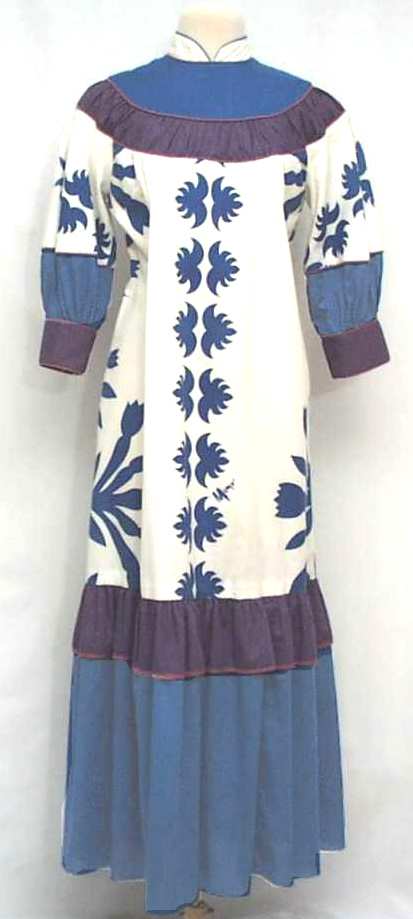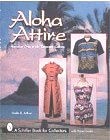The
Hawaiian subcollection with nearly 1,200 items is the only existing collection
of its type in the nation. It documents the impact of numerous immigrant
groups and illustrates the adaptation of costume to Hawaiian lifestyles.
Prior
to the arrival of Westerners Hawaiians wore garments made of Kapa.
Women wore pa'u (skirts) and men wore malo (loincloths). In
1820, Hawaiian royal women asked the first missionary women to make them
western-styled dresses. Because Hawaiian women were much larger than
the missionary women their dress style was adapted. The resulting
garment, the holoku, is a high necked, long sleeved dress with a yoke.
At the same time the missionaries made chemises to wear under the holoku.
Because these were short, they were called mu'umu'u and remained as undergarments
until Hawaiian fabric was introduced and used for mu'umu'u in the 1930's.
Hawaiian
garments are characterized by a tubular silhouette with no horizontal waistline.
Where fit is desired, such as in the contemporary holoku and holomu'u,
long darts and princess lines are used.
 |
Holoku,
1890 Reproduction
An 1890's
holoku was disassembled, a pattern made from it and new fabric used to
make this reproduction in 1949. The original trims and buttons were
used as well. Typical of 1890's holoku, this has leg-o-mutton sleeves,
a high neckline & sweeping train.
Holoku
have consistently become more slender-fitting since 1890. |
| Holomu'u,
1950s
The Hawaiian garment
industry came up with the holomuu in 1947 as an elegant day dress.
The Holomu'u does not have a train, but does have the close fit of the
contemporary holoku.

|
Mu'umu'u,
1970s
After Hawaiian prints
were introduced in the 1930's, the mu'umu'u became a garment for
daytime use. It can be long or short, but is always loose and comfortable.
This mu`umu`u was designed by Mamo Howell. Quilt motifs are Mamo's signature
design.

|
 Aloha Shirt, 1940s
Aloha Shirt, 1940s
The
aloha shirt originated in 1930s. The early days of aloha shirt manufacture
came from Japan as did this Kabe crepe fabric also used in kimonos.
More
Information on Aloha Attire

Arthur, L. B. (2000) Aloha Attire:
Hawaiian Dress in the Twentieth Century. Atglen, PA. Schiffer
Books. |
|
Go
Back
Go
Back Home
last updated 03.13.01



 Aloha Shirt, 1940s
Aloha Shirt, 1940s